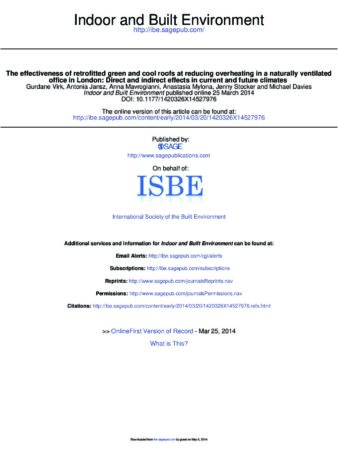
Mitigating summertime overheating is increasingly viewed as a key issue in urban planning – a warming climate and increasing urbanisation will exacerbate the problem. The effectiveness of green and cool roofs at reducing summertime overheating was assessed for a naturally ventilated, poorly insulated office roof in London. This was contrasted to the application of retrofitting traditional insulation.
The new Chartered Institute of Building Service Engineers overheating criteria was used to assess the level of overheating as predicted by a whole building thermal simulation model. The impacts of the roofing strategies were split into the direct and indirect effects. The indirect effects of the roofs were modelled using microclimatic modelling software. The results indicate the direct effects of green and cool roofs at reducing overheating are much greater than the indirect cooling effect. A non-insulated cool roof was found to be the most effective strategy. By insulating the roof, the level of overheating was slightly reduced. Non-insulated green and cool roofs were more effective than insulated roofs at reducing levels of overheating. When using a 2050 weather file, the building frequently overheated without the use of green or cool roof.
Publication Date: March 2014
